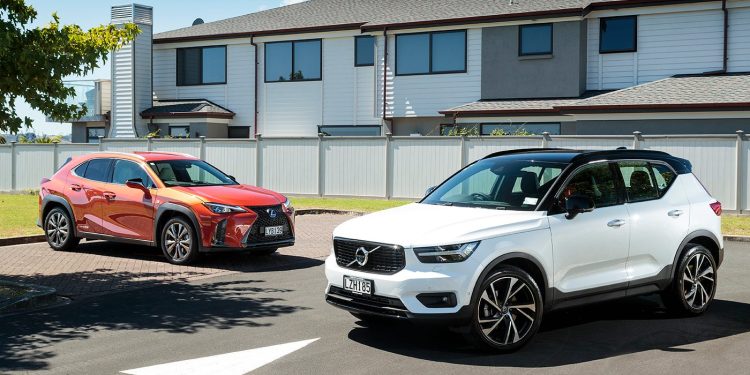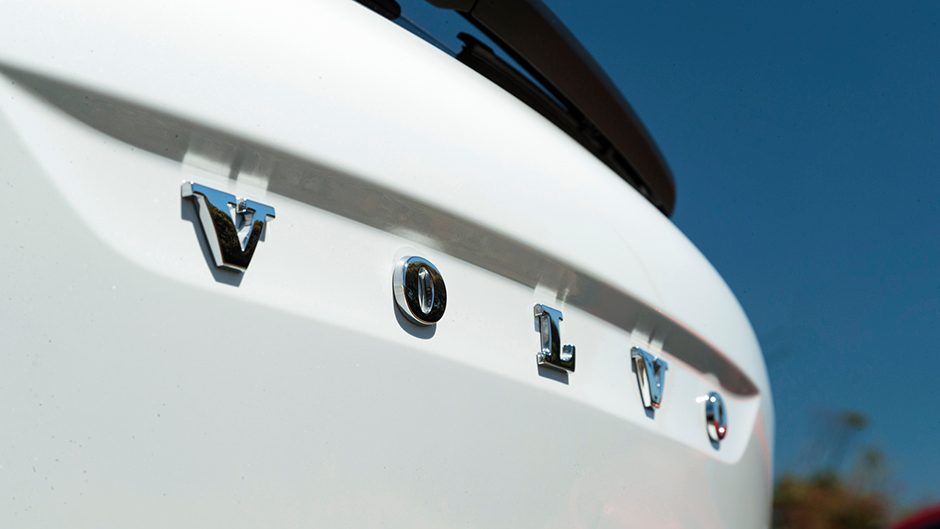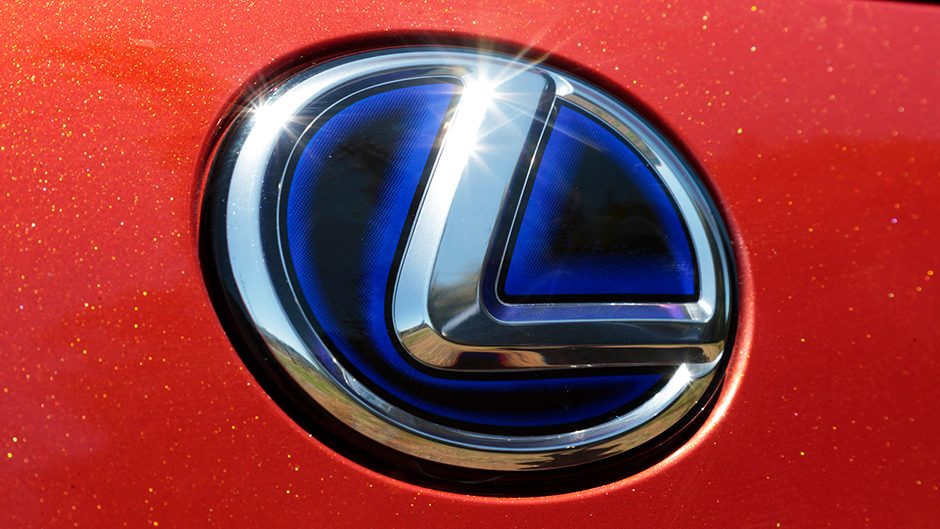2019 Lexus UX 250h F Sport vs Volvo XC40 T5 R Design comparison
Words Kyle Cassidy | Photos Tom Gasnier
You can now spend a lot on a little vehicle, with premium brands offering their take on the compact SUV. Small in dimensions, but not on price, here we compare the new Lexus UX with Volvo’s XC40.
Jeez, buying a car that’s ‘a bit nice’ used to be easy. Depending on the cut of your jib you’d opt for a fancy Ford or Holden or spend more and get something smaller and Euro. And it’d likely be a sedan as there wasn’t much else to choose from back when.
Unlike nowadays where the $60k to $100k price bracket is chocka with choices, including a raft of premium compact SUVs. Generally speaking, small cars aren’t big earners for manufacturers but when they dress those same mechanical bits up as a baby SUV, they can suddenly charge a healthy premium, especially luxury brands, and so they are all in on it.
These two, the Lexus UX and Volvo’s XC40 are small cars with big price tags, both in the seventies as they roll here. For some that will seem crazy money for such metal, but for their target market, they’ll be perfect; premium, on trend and right-sized. The UX is the newbie, the range starting from $60k with both conventional 2.0-litre and hybrid options. We have the F Sport 250h hybrid here, retailing for $72 large, the same price Volvo asks for its range-topping XC40, the AWD T5.
So which gets our vote?
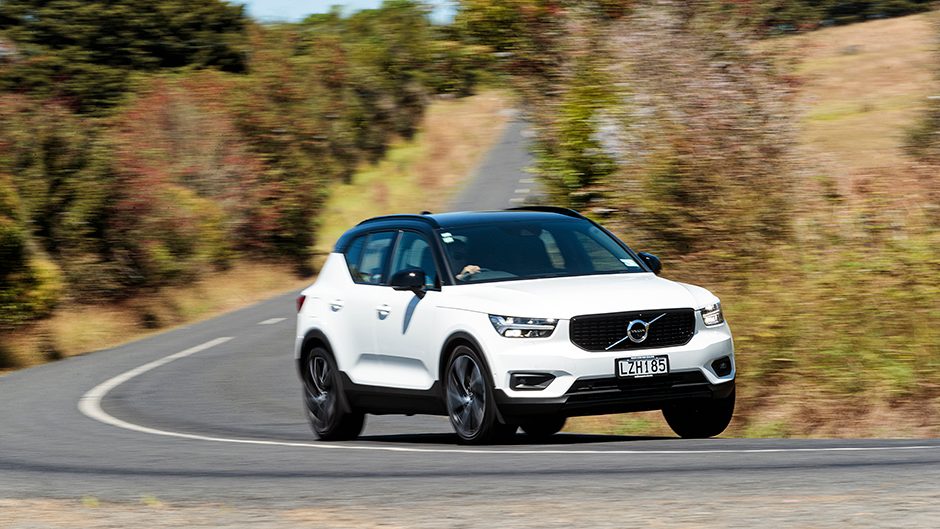
Small but spec’d
Diminutive it may be, but Lexus rams a lot of spec into the UX F Sport. Call it loaded, with no options to tick. While both have the same RRP, you’ll need to spend more on the Volvo to match the Lexus, like the $2000 driver support pack. That comprises a surround view camera, adaptive cruise and parking assistant (the latter about the only thing missing from the UX, and smartphone hook up). Others like a head-up display, variable dampers and adaptive high beams aren’t on offer with the XC. And the warranty and servicing deal on the Lexus is superior too.THE ENGINE IS QUIET, AND EASY ON GAS; WE SAW THE AVERAGE AT 5.4L/100KM FOR MUCH OF THE TIME
The UX hybrid makes use of a 2.0-litre petrol running lean on the Atkinson cycle mated to an electric motor to make 135kW in total, though no overall torque figure is given. It runs via an e-CVT, powering the front wheels alone.
The T5 version of the XC40 sees 182kW and 350Nm squeezed from a 2.0-litre turbo. It works through an eight-speed auto and the rears will help out when extra traction is needed. Performance favours the XC, scurrying to the legal limit more than two seconds ahead of the hybrid at 6.8sec timed by us, but on economy it naturally swings the other way.
The 250h is rated at just 4.5L/100km, the turbo’d XC at 7.1. Urban life You might think life behind the wheel of the UX would feel a bit underwhelming compared with the turbo’d XC40 but that’s not quite the case around town. With electric torque and a good initial response from the e-CVT, the 250h gets away smartly and is up to speed in traffic quickly. It can then drop the engine for a bout of EV-ing, but only under a light throttle on the dead flat, though that can happen at motorway speeds too.
The engine is quiet, and easy on gas; we saw the average at 5.4L/100km for much of the time we spent commuting about the city. The Volvo doesn’t suffer from lag away from the mark, but the stop/start system can add a moment of hesitation to proceedings. Once away, the easy torque allows the auto to slip through the gears and this always feels like it has extra power on tap.
But it’s of course thistier, up into the high nines around town for consumption. Both have light steering, the Volvo with a slightly larger turn around but better all round vision, including larger side mirrors, though the Lexus has a slight edge in ride quality. Each is festooned with driver aids, both with bossy active lane keeping functions which annoy more than they help, unlike the active cruise systems which keep you sane in jams by managing the following distance and bringing you to a smooth halt when everything grinds to a stop.
Both safety monitoring systems limit the false alerts and are good at picking up changing speed limits, though they struggle with LED speed signs.
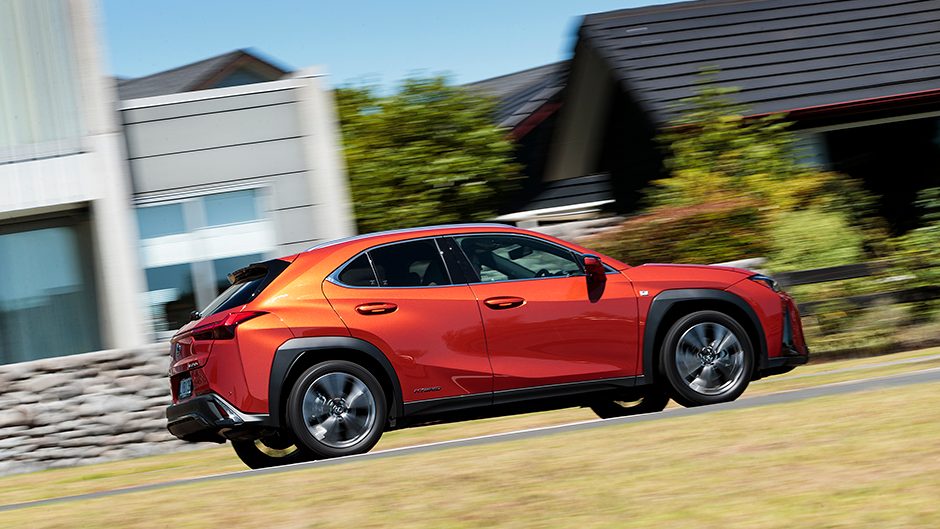
Getting on with it
The UX F Sport, on adaptive suspension, treads a good line between compliance and control as the ride is free from any stiffness but the roll is well contained. The steering we’ll call faithful, it’s feedback-free but refined and in the Sport modes it weights up to help you guide it around bends more accurately. It turns okay but the safety aids don’t give the front end any leeway, the electronics in quickly to trim any hint of push before it eventuates. It’s set up to be safe, not to thrill.
You could cut and paste those steering comments for the Volvo too, but the front end is more responsive, has more stick to it and the ESP is less nannying. With AWD, all the power is deployed out of a bend, and while there’s a mite more firmness to the R-Design’s sporting gait at pace, it’s nothing untoward while the added control sees it round up bends in a more convincing manner.
There’s more noticable tyre noise in the Lexus, both in and out of town, where in the Volvo you’re more likely to hear the four pot banging away. With more ponies pulling less weight, the Volvo cleans up the UX for pace at highway speeds with the midrange pushing it along easily, while the top end power makes for safer overtakes.
The hybrid isn’t a slug but the effect of the electric oomph dissipates at higher speeds, and it’s up to the 2.0-litre to do most of the work. The e-CVT in Sport mode holds its ratio when you’re on and off the gas to improve the general responsiveness of the powertrain. Still, it doesn’t feel as good in operation as the proper auto in the XC40.
Even though it’s a little relaxed with the shifting at times, even in Dynamic mode, it’s still better than a CVT, and is good at maximising the turbo torque of the T5 engine. As for fuel use when pushing on, it went even higher in the Volvo, nudging the 12s where the hybrid continued to sip politely, rising to the high sixes. Even though the brakes of the hybrid feel okay in operation, not too snatchy and with reasonable modulation, the XC has both better pedal feel and bite.
Compact and practical?
The XC is physically bigger than the UX, looking more like a mini SUV than a jacked up hatchback. And that gives it more usable interior space while not taking up a whole lot more real estate on the driveway. Starting from the back, the Volvo has the bigger boot; wider, longer and much deeper while the UX offers only half the space thanks to a high set floor and sloping tailgate.
Rear leg and headroom are in greater supply in the XC40, and the entry is easier via more generous door openings. Once you manage to get in the UX there’s okay space, but it’s more of a four-seater option with not much left for a middle passenger. Up front, the Volvo has the more the elevated driving position and a minimalistic design approach. Everything is controlled via the portrait-oriented touchscreen, which is probably the best infotainment arrangement in the business.
With its large format, intuitive control and quick response, you’re never left wondering how to achieve things. The XC40 is well trimmed, complete with funky carpet linings for the doors and centre console. Like the exterior, the cabin of the UX is certainly different with all the complex intersecting curves fitting together as if they were grown rather than constructed. Everything works with absolute precision and tactility.
Well, everything expect the track pad controller of the infotainment system; it’s well time to give up on that Lexus. For a hybrid, the controls are conventional, with the EV mode button the only real giveaway to its electrified gubbins.
The white leather isn’t the greatest idea, and it was already starting to look grubby around the grab areas. The seats are comfy though but only slightly raised if you’re after a more commanding station.
Which one’s for you?
If you like the look of the UX, favour miserly fuel consumption over power, and can live with the compact interior dimensions, then go for the better specified Lexus with its superior aftersales package. We however prefer the Volvo; it’s a better drive but what really sways it for us is the styling and interior with more space and a superior infotainment system. That Lexus trackpad thing simply drives us crazy.
| Model | Lexus UX 250h F Sport | Price | $72,990 |
| Engine | 1987cc, IL4, DI, 107kW/188Nm | Drivetrain | e-CVT, front-wheel drive |
| Fuel Use | 4.5L/100km | C02 Output | 103g/km |
| 0-100km/h | 9.35sec | Weight | 1579kg |
| Model | Volvo XC40 T5 AWD R-Design | Price | $72,900 |
| Engine | 1969cc, IL4, T/DI, 182kW/350Nm | Drivetrain | 8-speed auto, all-wheel drive |
| Fuel Use | 7.1L/100km | C02 Output | 166g/km |
| 0-100km/h | 6.81sec | Weight | 1746kg |


